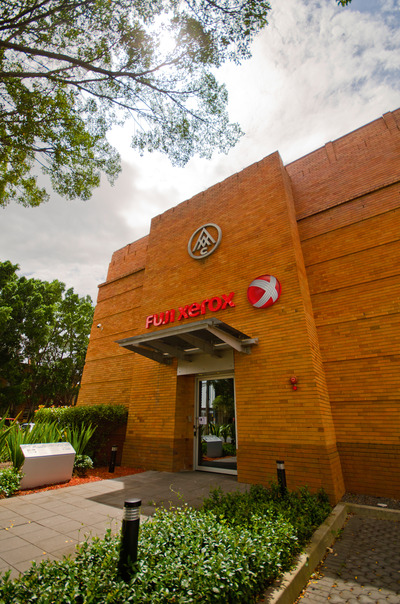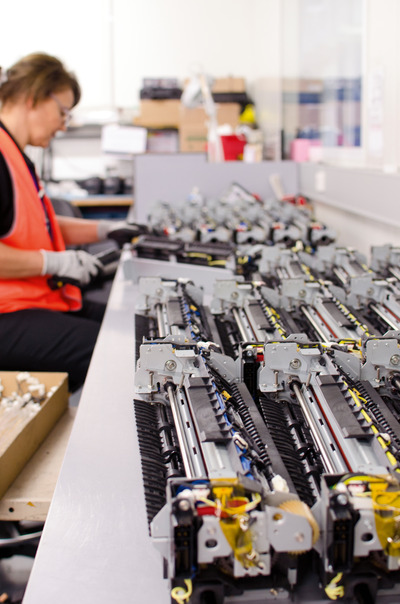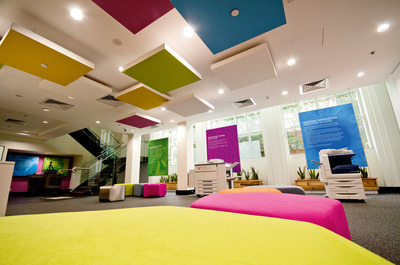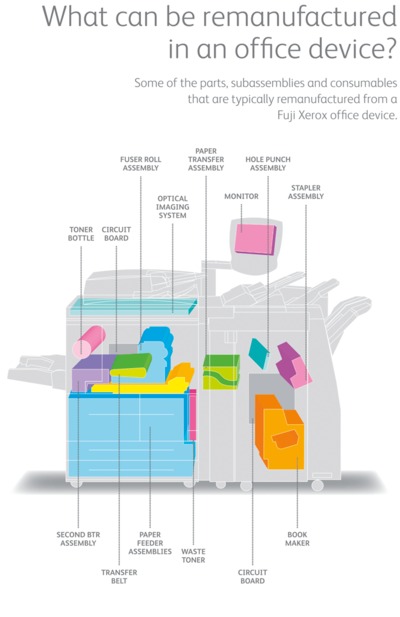Remanufacturing recovers the goods
Monday, 23 April, 2012
In a climate where consumers and businesses are feeling pressured to meet new sustainable energy targets, Fuji Xerox Australia is way ahead of the pack. The company’s Eco Manufacturing Centre, recently relocated to Rosehill, proves, through the remanufacturing of parts and an eco-friendly building, that a commitment to the environment can pay off.
On 16 March 2012, the Fuji Xerox Eco Manufacturing Centre at Rosehill officially opened its doors. The centre, which employs over 75 people, is designed to increase the scope of Fuji Xerox Australia’s eco manufacturing operations and support its commitment to end-of-life product stewardship. The ribbon was cut by the Parliamentary Secretary for Sustainability and Urban Water, Senator Don Farrell.

At the opening of the centre, Senator Farrell spoke about the government’s new Product Stewardship legislation, which acknowledges that anyone involved in a product’s life cycle must ensure that it is managed in a responsible way. He noted that Fuji Xerox has already displayed this responsibility through its remanufacturing process, in advance of its legal requirement to do so.
This environmentally friendly approach actually goes back further than Senator Farrell may realise. Lachlan Feggans, National Environmental Management Systems Manager for Fuji Xerox Australia, told Sustainability Matters that the company has had a commitment to sustainability since 1969, when its Pollution Prevention Committee was established - long before sustainability was ‘that buzz-word it is today’.
Since then, the company has gone on to lead the way in sustainable practices in the multifunction device space, from printing double-sided paper in the ’70s to the beginning of remanufacturing in the ’90s. This concept was introduced to Australia by Dr Dan Godamunne, Executive General Manager of the centre. As explained by Feggans, Dr Godamunne and his team looked at a $3000 circuit board and realised that by remanufacturing it, they could “save the company $3000, reduce our waste and landfill, and actually extend the life of that particular piece of the machine”.

In the year 2000, Fuji Xerox opened its first eco-manufacturing centre in Zetland, and was elected to the UN 500 Roll of Honour for environmental leadership for doing so. The centre took back parts such as toners and rollers, remanufactured them and sent them back out to be re-used, until they would be sent back and the process would start again. Fuji Xerox Operations Manager, Julius Dhanu, noted that remanufacturing is actually more sustainable than recycling, as the latter requires quite a lot of energy in order for an item to be converted back to raw materials and made into something new. Remanufacturing, on the other hand, involves disassembling and recovering a device, replacing parts, if necessary, then sending the device back out to perform the tasks it has always done.
Fuji Xerox has ensured that the remanufacturing process is as eco-friendly as possible. As Dhanu explained, the company uses the more environmentally friendly versions of materials in preparing items, then sends these materials off to other companies for re-use. This occurs with the baking soda used to strip the rollers, and the compressed air and powder from the cleaning booths. This is despite the fact that this costs more than it would to just send the materials to landfill. Dhanu said this was indicative of the company’s commitment to sustainability.

This commitment has certainly paid off. Between 1996 and 2008, the company managed to avoid almost 139,000 tonnes of carbon emissions and reduce the requirements of raw materials by 21,600 tonnes. In the last year in review, the total amount of end-of-life products gathered from customers increased from 3044 tonnes in 09/10 to 3461 tonnes in 10/11 - a 13.7% increase overall. Around 140,000 parts and sub-assemblies are now remanufactured annually, with remanufacturing accounting for about 30% of the company’s spare parts requirements, by value. Over the past 15 years, the company has invested $22 million into the eco manufacturing centre - and received a return of $240 million.
It’s not just the actions that go on in the centre that should be commended, but the building itself. In its efforts to remain ecofriendly, Fuji Xerox aims to achieve a 5 Star Green Star rating for the office fit-out, incorporating energy efficient features which even the old centre didn’t have. These include:
- Partially recycled flooring
- Wall paint with low/no VOC
- Light sensors which turn off the light if no movement is detected, or dim if there’s natural light
- An automatic sun shade to block the sun and reduce heat
- An air conditioner which only introduces fresh air where it senses CO2
- Recycled desk wood
- Solar hot water
- A rainwater tank for the toilets and gardens

This is even more remarkable when one considers that the new centre is actually a heritage-listed building from the 1930s. Feggans explained that the company could have developed a brand new building and designed those features in - most likely achieving a 6 Star rating in the process - but instead chose to re-purpose an existing building. Not only was this a further example of recycling and re-using, but it also proved that already existing buildings can be future-proofed for the rising costs of energy and waste - by anyone.
“Yes there has been a significant investment,” Feggans said, “but the costs will be recouped, ’cos we had to do that analysis. We want to put in efficient lights: what’s the payback? We want to put in efficient air conditioning: what’s the payback? We had to do that analysis to actually have this building the way it is today. So I think everyone can do this and this is a shining example of that.”
Feggans stressed that focusing on sustainability is an economic decision as much as an environmental one and businesses need to realise this.
“Each decision that’s made in the sustainability space needs to factor in people, the economy and the environment as well,” he said.
“The business case for the eco manufacturing centre needed to be based on cost and how we can save the business money. From that, we’ve been able to not only save money; we’ve reduced landfill, we’ve increased brand around sustainability and we’re reducing material inputs to the business as well. When I say material inputs, I mean raw material extraction to build new products. That offset is phenomenal. What we do here should be an example to a lot of manufacturing centres.”

Feggans provided further advice for any organisation wishing to cut back on their carbon footprint.
“You can’t manage what you don’t measure,” he said. “So start measuring it and once you’ve got that measurement profile you’ll start to see where the savings can be made. And when you start to see where the savings can be made, you’ll also notice another thing: if we reduce our carbon emissions here, we’re going to reduce our cost as well.”
Clearly, following this example has been the key to Fuji Xerox’s success. With over 900 remanufacturing programs developed and another 30 to be added over the next year, the company’s future is looking bright, clean and green. While other organisations may struggle with the idea of a Clean Energy Future, Fuji Xerox will be sitting pretty, unburdened by a commitment to sustainability that has lasted for over 40 years.
With thanks to Lachlan Feggans and Julius Dhanu.
For more on Fuji Xerox’s commitment to sustainability, visit http://www.fxasustainability.com.au/.
Fighting waste by counting flies
An innovative tech collaboration is helping to finesse a rubbish recycling process that relies on...
'Tis the season for sustainable food at Christmas
As the festive season approaches, research fellows at UQ provide five tips for consuming more...
How Sydney's OS Passenger Terminal slashed its waste costs
Veolia has delivered a custom-designed solution that cut the Overseas Passenger Terminal's...







